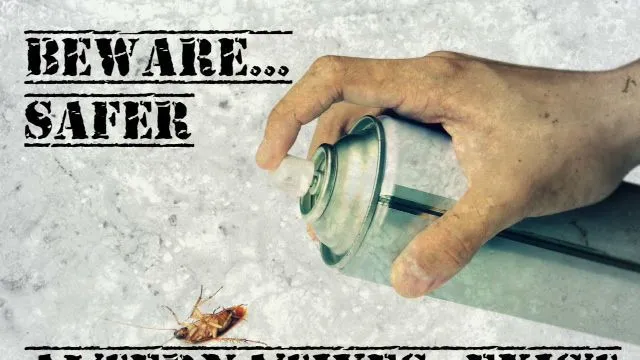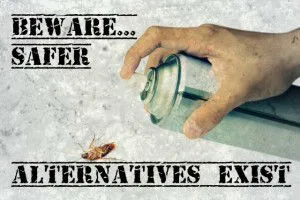
- Share on Facebook66
- Share on Pinterest
- Share on Twitter
Insects are one of the last things we ever want to see in our homes. Who wants to reach for a snack and see cockroaches scattering, or find ants crawling over a freshly-cut piece of fruit? While having bugs in your house is indeed unpleasant, the toxic chemicals often used to kill them can be far worse.
The Natural Resources Defense Council (NRDC) reports that between 2000 and 2008, the state of California had more than 7,600 reports of pesticide poisoning cases, 200 of which required hospitalization. Approximately half of these cases were from non-agricultural pesticide use, such as in the home, yard or garden.
Many of the chemicals used in common pesticides can cause negative health effects, ranging from mild to severe. The NRDC outlines some of the more serious effects as damage to the nervous, respiratory, immune, endocrine and reproductive systems, as well as cancers. In milder cases, many people experience short-term respiratory and digestive complications.
The New York times reports that between 2003 and 2011, about 111 people across seven states were made ill solely by pesticides designed to kill bedbugs. Mild symptoms included headaches, nausea and shortness of breath. The type of pesticides most often responsible for these cases contained pyrethroids and pyrethrins, both common ingredients in home pesticides.
The NRDC also states that children are at an increased danger from pesticides, as their bodies are still developing, and pesticide poisoning can lead to long-term developmental damage. As kids spend more time crawling and playing on the floor where pesticides are applied, their exposure is also often more direct.
In April, we reported on the illegal use of Fipronil-based pesticides by exterminators in Indiana and Georgia. Although this chemical is illegal for indoor use, it has been found to be used by some companies anyway.
According to the CDC, exposure to Fipronil can lead to headaches, dizziness, gastrointestinal symptoms, respiratory issues and skin irritation. This chemical may be especially dangerous to children, pets and those with weakened immune systems.
There are many natural, non-chemical methods of getting rid of pesky insects without taking a chance on toxic chemicals. The most important first step is to keep your home as clean as possible.
Bugs of all sorts will flock to food that is left out, open garbage cans or dirty dishes in the sink. Be sure to vacuum regularly and clean your floors (white vinegar makes a great floor cleaner), and seal cracks in cupboards, baseboards and sinks with caulk.
On top of keeping a clean home, try the following:
- Coffee grounds can be sprinkled around your home in areas that are prone to ants to help clear up an ant infestation. You can easily vacuum the grounds when the ants are gone. Making a ring of coffee grounds around plants can also keep ants, as well as snails and slugs, out of your garden.
- Dry, crushed mint leaves, or mint tea bags, placed around your home can deter both ants and flies.
- Food-grade diatomaceous earth can tackle both cockroaches and bedbugs. In the case of bedbugs, wash all of your bedding in hot water, and apply diatomaceous earth around your bed, or wherever the critters lurk.
- Catnip scattered around your home, or brewed with water to make a spray, can help to deter cockroaches.
- To kill stray cockroaches that you may spot, spray them with soapy water.
 Citrus peels placed around your home can help to deter both fleas and moths. Citrus essential oils in a diffuser may also do the trick.
Citrus peels placed around your home can help to deter both fleas and moths. Citrus essential oils in a diffuser may also do the trick.- Aside from these methods, use non-chemical traps, such as jar or light traps, which are readily available at many stores to specifically deal with many different types of insects.
-The Alternative Daily
Sources:
https://www.thealternativedaily.com/know-bug-man-spraying
http://www.nrdc.org/health/pesticides
http://www.nytimes.com/2011/09/23/nyregion/panic-over-bedbugs-may-be-more-dangerous-than-bites.html?_r=0
http://www.cdc.gov/niosh/topics/pesticides/Lee_acute.html
http://eartheasy.com/live_natpest_control.htm
https://www.thealternativedaily.com/how-to-upcycle-coffee-grounds
- Share on Facebook66
- Share on Pinterest
- Share on Twitter

